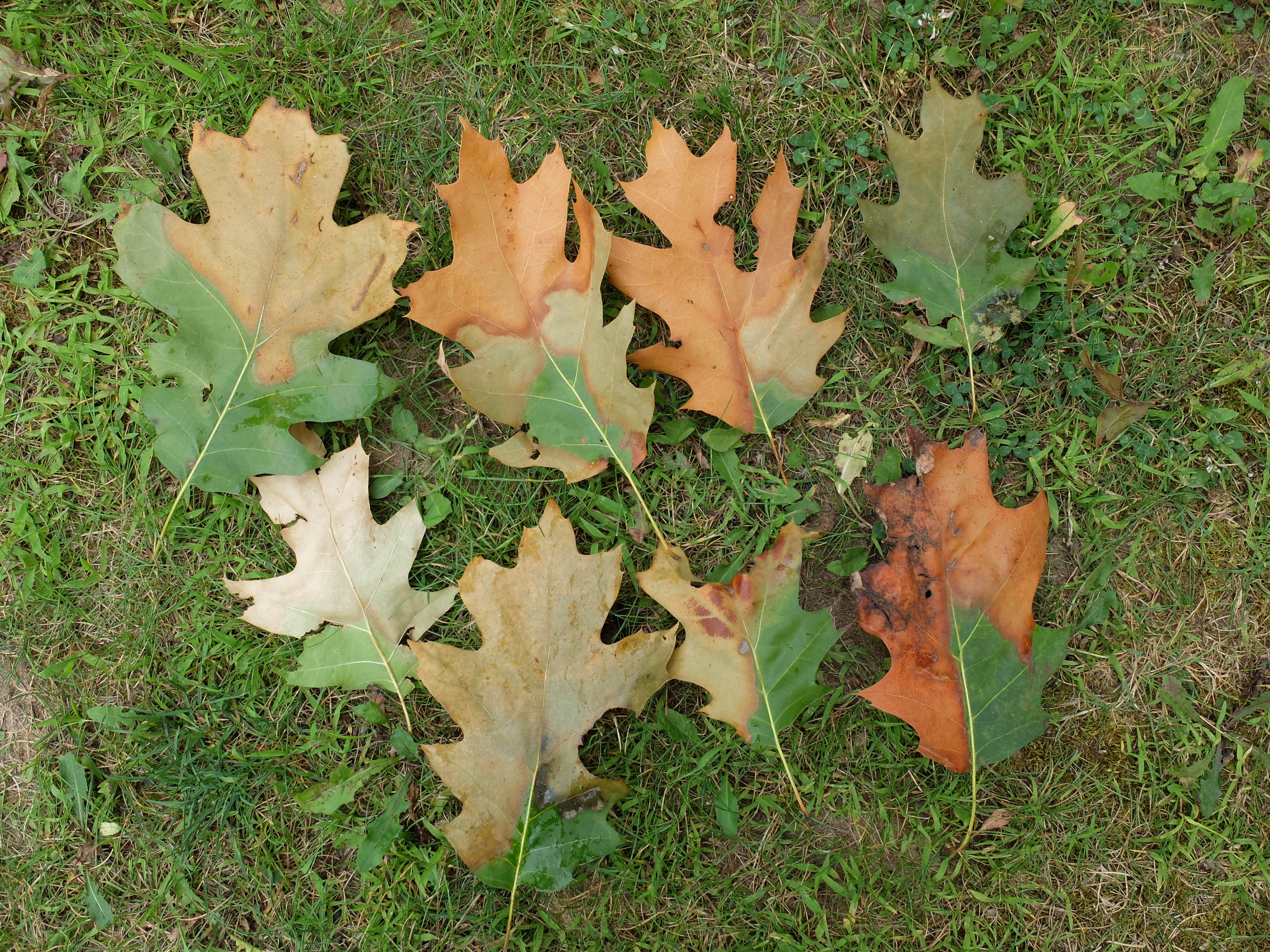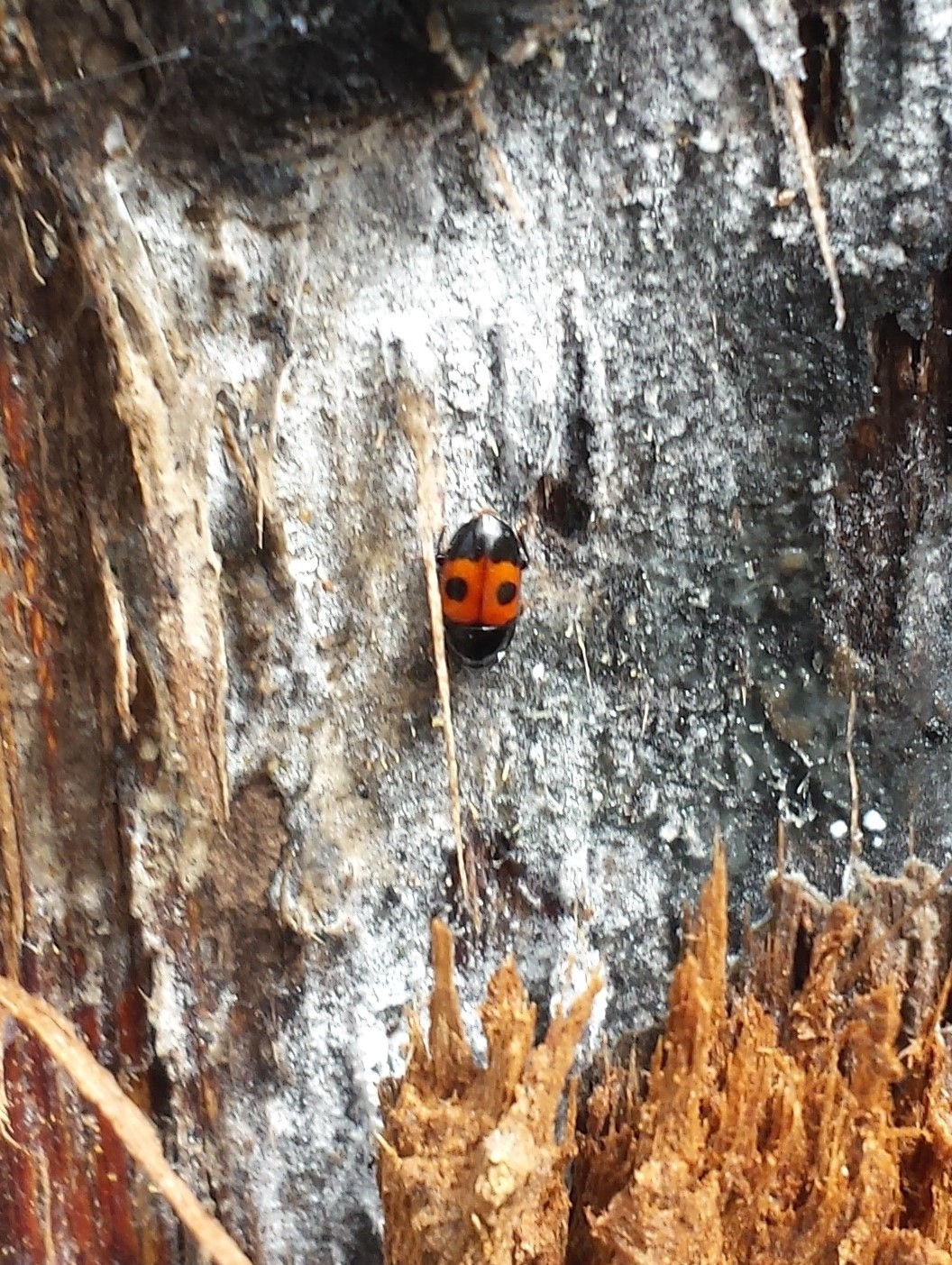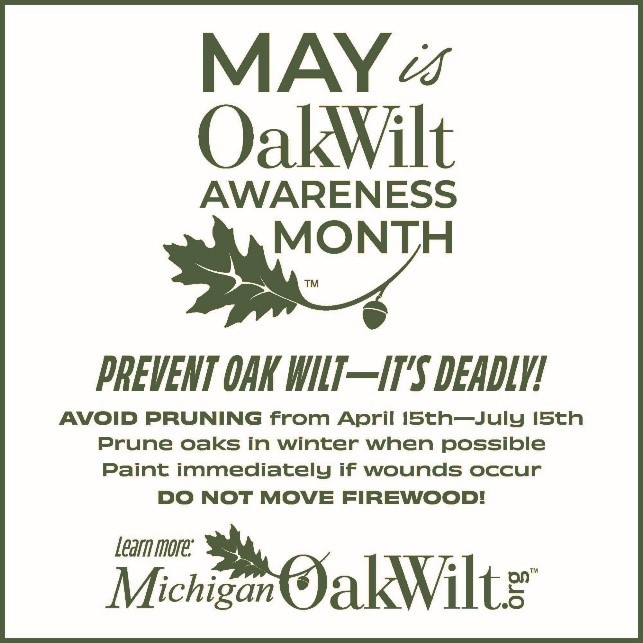Oak Wilt Awareness Month in Michigan
This campaign raises awareness about oak wilt prevention guidelines: avoid wounding trees between April 15-July 15, seal accidental wounds, do not move firewood, and take prompt action to control outbreaks.

By proclamation of the governor, May has been designated as Oak Wilt Awareness Month in Michigan to bring statewide attention to the value of oaks to Michigan’s environment, recreation and wood products industries, and the need to raise awareness about prevention and management of oak wilt, a disease killing red oaks across the state every year.
Oak wilt primarily affects trees in the red oak group (Lobatae). This disease can spread two ways: through overland (aboveground) and underground transmission. Overland transmission occurs when an oak has a fresh wound that goes through the outer bark and into the sapwood (xylem cells). Sap from the wound attracts tiny sap beetles (family Nitidulidae), which may carry fungal spores of oak wilt (Bretziella fagacearum) on their bodies. The beetles pick up these spores when they visit spore-producing mycelial mats found beneath the bark on trees that the oak wilt fungus has killed.

When a contaminated beetle feeds on sap from a wound on a healthy oak, the spores can infect the tree. The fungus grows in and eventually plugs up the xylem cells the tree uses to transport water. This causes the tree to “wilt” and die. Trees infected in the spring can die rapidly, within a few weeks. Trees infected in the fall may not die until the following year.
Michigan State University researchers (Monique Sakalidis, Deb McCullough and Bert Cregg labs) funded through MSU Project GREEEN and the Michigan Invasive Species Grant Program (MISGP) have found that beetles are most likely to be carrying spores in late spring and early summer. Therefore, activities that may wound trees should be avoided from April 15 through July 15 to reduce the risk of overland transmission and new oak wilt infections. Unavoidable or accidental wounds from storms or lawn equipment should be painted with a pruning sealer or latex paint as soon as possible.

Another way the disease spreads aboveground is when wood from oaks killed by oak wilt is moved into new areas. Sporulating mycelial mats that attract sap beetles can be produced on firewood or logs from trees killed by oak wilt during the previous year. Dry wood or completely debarked wood does not contain enough moisture for the oak wilt fungus and is safe to move.
Underground transmission from tree-to-tree occurs via grafted, i.e., connected roots between infected oaks and nearby healthy oaks. A tree killed by oak wilt can become the center of a disease outbreak resulting in expanding pockets of dead and dying trees. When oak wilt is detected, management involves disrupting the connected roots, usually done by trenching, and removal of both infected oaks and a buffer of healthy oaks to curtail disease spread. Managing an outbreak early and effectively prevents additional oaks from becoming infected and dying. A new project focused on oak wilt management funded through the MISGP will continue to develop and assess management options (Sakalidis, in cooperation with McCullough and Cregg).
It is important to seek professional help when oak wilt is suspected. The Michigan chapter of the International Society of Arboriculture (ISA-Michigan) trains arborists and foresters to identify and manage oak wilt. Diagnosing oak wilt requires either the observation of a mycelial mat on a dead oak or a lab-based confirmation of symptomatic branches (samples can be sent to MSU Plant & Pest Diagnostics).

To promote May is Oak Wilt Awareness Month, the Michigan Department of Natural Resources recently awarded a grant to the Oak Wilt Coalition to create and distribute oak wilt prevention materials. These materials will be available at all 14 Michigan Department of Transportation Welcome Centers, in addition to community-wide distribution. Logos have also been created that anyone can download and use to help raise awareness for this important issue. Download the logos at May is Oak Wilt Awareness Month.
Additional resources to learn more about oak wilt
- Worried About Oak Wilt by Monique Sakalidis, Karandeep Chahal, Olivia Morris, Bert Cregg and Deborah McCullough
- Smart Gardening to Prevent Oak Wilt by Monique Sakalidis and Ruth Dorando Marcy
- Oak Wilt in Michigan's Forest Resource by Bill Cook
- Visit MichiganOakWilt.org for more information



 Print
Print Email
Email

